You don’t have to wait until spring and summer to enjoy fresh flavors – not when you can easily grow tasty herbs indoors in the middle of winter – right inside the comfort of your house – and you might just be surprised how easy and fun it can be!
Not only can growing herbs bring life to your interior spaces, but they can really add big flavor to a wide variety of dishes. Especially when they are fresh picked for every meal. But what’s really great about growing herbs inside is that it doesn’t require a lot of space or effort.
In fact, many herbs can grow and flourish incredibly well on the sill of a window without any problem at all – while others, with just a little bit of help from a small grow light, can thrive as if they were growing outdoors in the middle of summer.
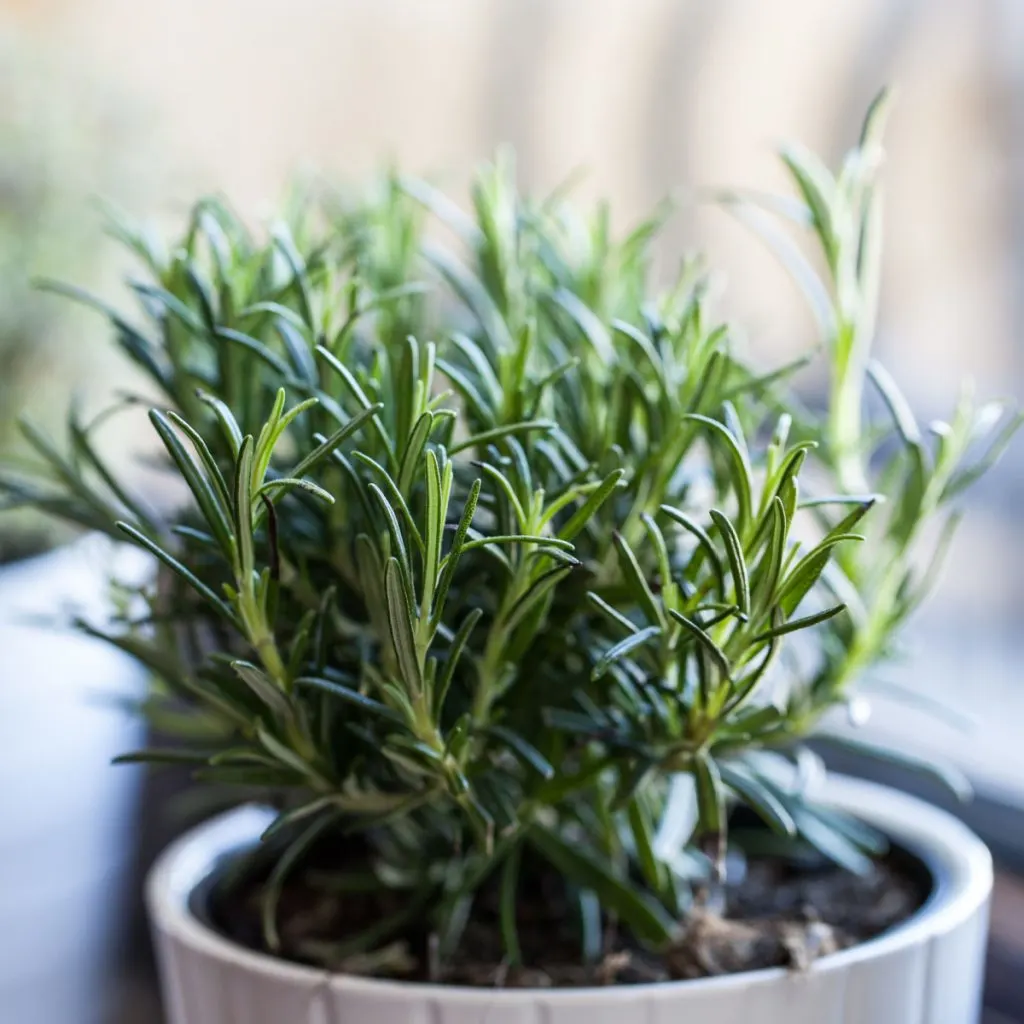
Unlike most vegetable plants that require extremely fertile soil and long hours of sunlight to grow, mature and produce, many herbs can flourish without the need for power-packed soil and long hours of daily lighting.
In addition, herbs tend to grow in a more compact fashion. That allows for multiple plants to grow and produce in a smaller space. One thing is for sure – all of those advantages make herbs perfect for growing indoors in the middle of winter!
How To Grow Herbs Inside In The Winter
Giving Your Herbs The Right Light
For herbs like rosemary, mint, chives, oregano and thyme – all you need for winter growing is a southern facing window. Why are southern facing windows the best? Quite simply, because they allow the most winter sun to reach plants.
In the winter, the sun still rises in the east and sets in the west. But during the cold months, it bends on a much more southerly arc. As it does, it provides light to the southern facing window more than any other window direction.
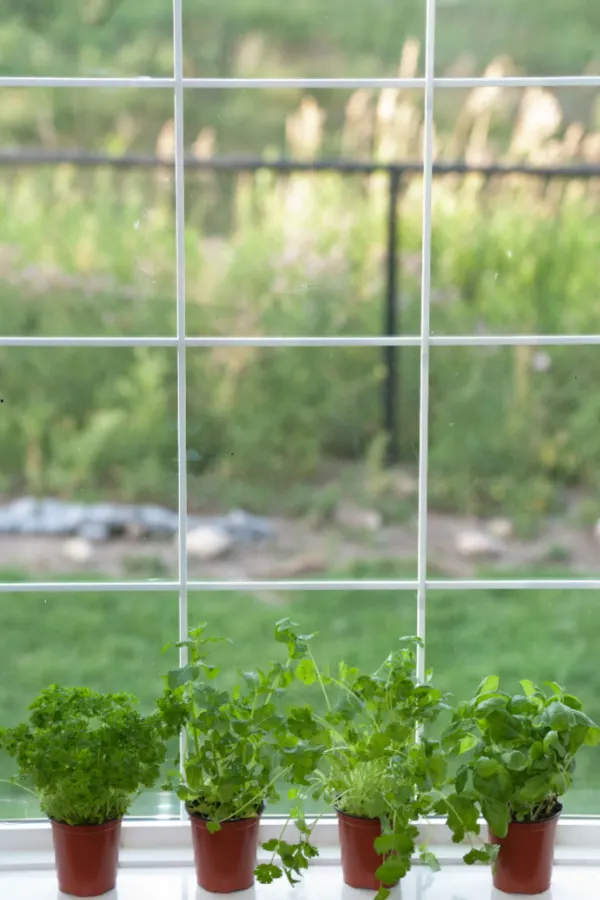
If there are no outside obstructions (trees, bushes, structures, etc.), a southern facing window can usually provide at least 6 hours of good lighting for herbs. In some locations, it can even be almost 8 full hours of light.
Although sunny windows are great for growing herbs, they are not a great place to start your vegetable plants. Vegetable seedlings like tomatoes and peppers grow fast. And they will reach for the light from the far away sun to try to grow more. The result is vegetable plants that grow long, skinny and weak.
But with herbs, window growing isn’t an issue at all. Herbs are not ultra-fast growers, and the sunlight coming through a window is perfect for providing the right kind of light for strong growth.
The Right Soil & Pots For Herbs – How To Grow Herbs Inside In The Winter
Whether you are starting herbs from seed or purchasing established herbs already in pots, it’s important to make sure your plants are growing in a fertile, well-draining potting soil mix.
Although herbs do not require a tremendous amount of nutrients, quality soil that drains well will keep them going strong all winter long. With herbs, there is no need for special mixes, a good, basic all-purpose organic potting soil will work well. Affiliate Product Link: Burpee | Premium Organic Potting Natural Soil Mix
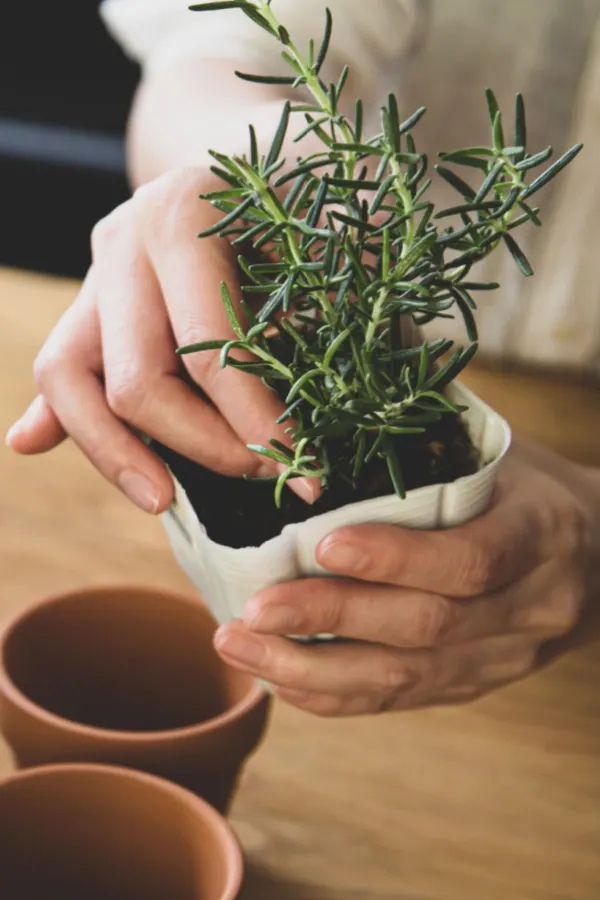
It’s also important to select the right container for growing indoors, especially if you will be growing in a window. Windowsills usually measure anywhere from a few inches to eight inches in depth, so choosing a pot that fits securely is a must.
For most average windowsills, a four inch diameter pot works best. At four inches, there is plenty of room for the roots of most herbs to expand with ease. Even better, at that size, the pot will fit securely on most standard windowsills.
As when growing in any container, always make sure there are drainage holes in your pot. Without the ability to drain away excess water, herbs can and will easily rot away.
It’s also a great idea when growing in windows to have some type of saucer under the pot. Water and soil can easily drip through the bottom of the holes in the pot and damage the windowsill. A small saucer or plate underneath will keep any damage from occurring.
Now that we have covered what you need to grow herbs indoors – let’s take a look at some of the best varieties to try to fill your winter home with fresh flavor!

The Best Herbs To Grow Indoors In The Winter
Rosemary
Rosemary is the perfect herb to flavor chicken and poultry dishes. It also happens to work well for flavoring pork, lamb and fish too.
The biggest key to growing rosemary indoors is allowing the plant enough light to survive. At minimum, rosemary will need at least 4 to 6 hours of light each day. A southern-facing window is good for this as long as the sunlight is not obstructed.
Rosemary is a slow grower from seed, so you certainly have to be patient when starting out. But once it takes off, it will provide you with a steady supply of fresh rosemary for a long time. One of the best things about growing rosemary is that you can simply snip off a few leaves whenever you need them – and the branch will continue to regrow. Affiliate Link: Rosemary Seeds for Planting
Mint – How To Grow Herbs Inside In The Winter
Mint is one herb that can handle almost any climate and growing condition. Not only does it freshen up the air with its fragrant aroma, it lends itself to a lot of uses in the kitchen as well.
Mint needs around 6 hours of passive window lighting to continue growing well indoors. It will suffer more from over-watering than under-watering. With that in mind, allow the soil to dry out between watering, and only water to slightly moisten the soil.
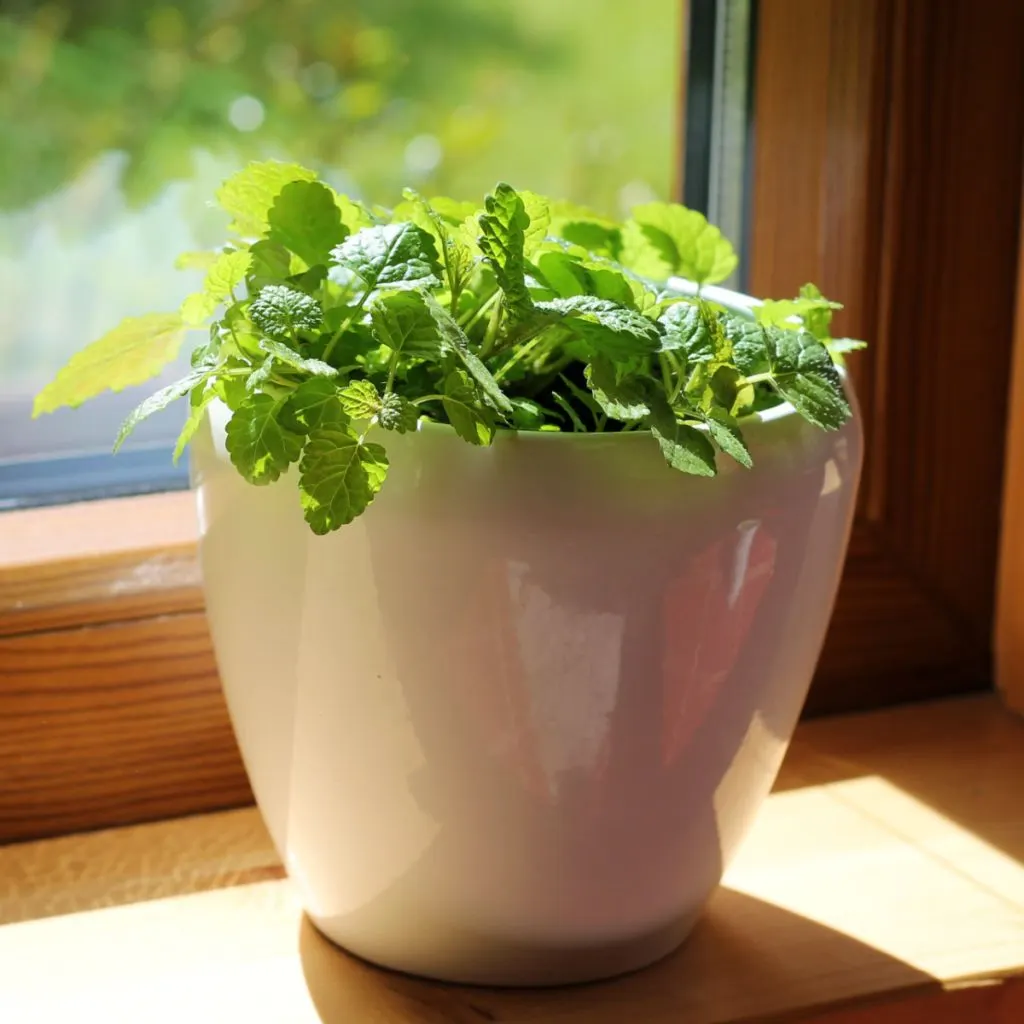
You can find varieties of mint in all kinds of flavor profiles – from spearmint, lemon mint and chocolate mint, to apple mint and more! Affiliate Seed Link: Mint (Apple) Seeds
Snip off the leaves as needed and trim back if growth becomes too aggressive. You can easily take mint outside in the spring, but be sure to keep the plant in a container if you plant in the ground. Mint is an aggressive grower. It can and will become invasive if allowed to grow uninhibited outdoors.
Chives – How To Grow Herbs Inside In The Winter
Chives are perhaps one of the easiest herbs of all to grow and maintain – indoors or out! They are perfect for adding a little onion flavor to soups, salads, casseroles and more. And of course, wonderful for giving a little zip to potatoes too!
Chives grow easily from seed or by division from an existing plant. They do require a decent amount of moisture when potted. Water thoroughly when the soil becomes dry to the touch. Affiliate Link : Chive Seeds
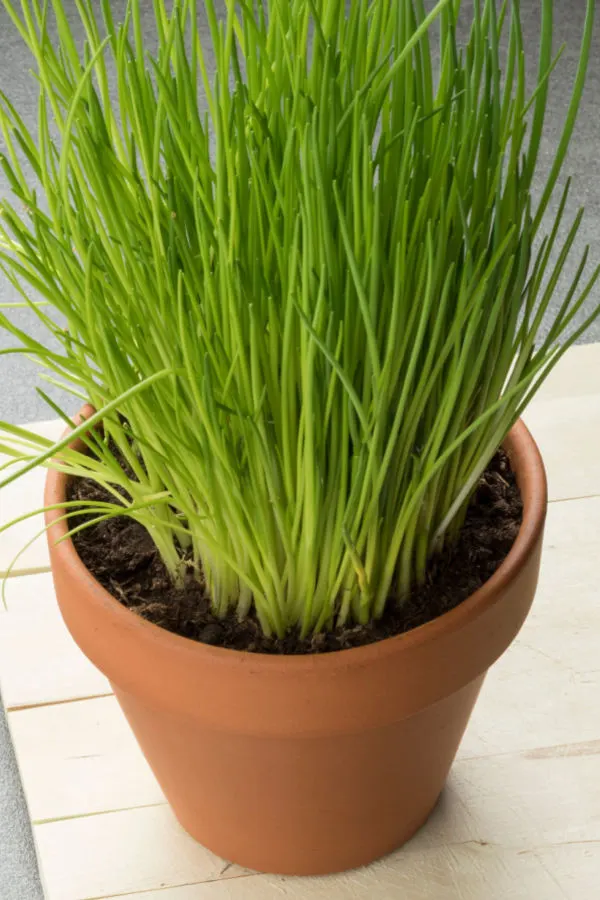
Harvest the tips of chives as needed by snipping off with sharp scissors. When spring arrives, they can be kept indoors, or planted outside to expand their growth. They are slow growers and not invasive in the least.
Oregano – How To Grow Herbs Inside In The Winter
Oregano is one the most widely used of all herbs, flavoring everything from Italian and Greek cuisine to authentic Mexican foods. It also happens to be simple and easy to grow indoors as well!
The key to growing oregano inside is keeping the root ball submerged in the soil all while keeping the lower stems out of the dirt. The lower stems can easily rot off, especially if the plant is over-watered. Like chives, simply snip off leaves and stems as needed to enjoy all winter long!
Basil – How To Grow Herbs Inside In The Winter
Basil is another widely used herb, so we wanted to include it on our list for sure. However, it is one herb that usually needs a bit more light than just a sunny windowsill to thrive.
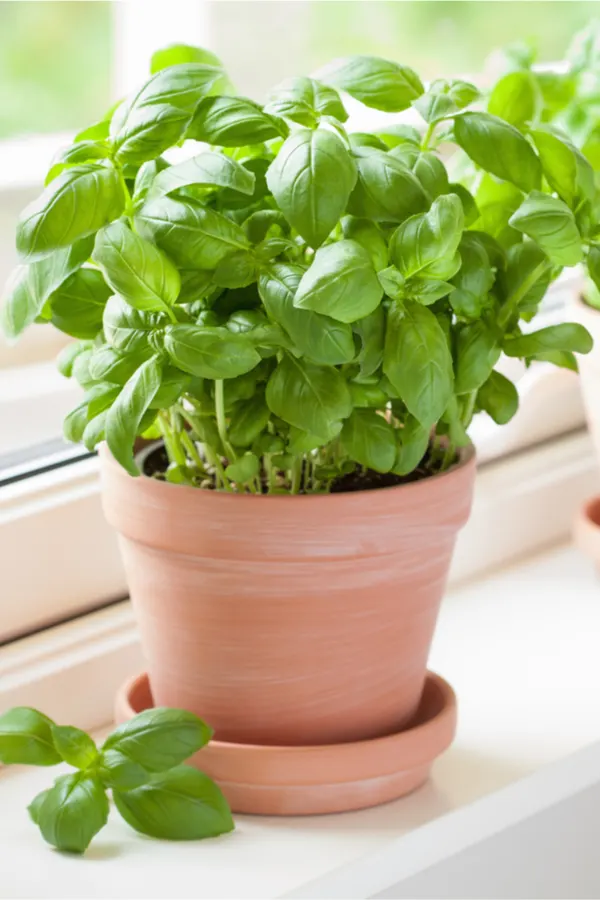
Basil needs at least eight hours of good light to survive and thrive. Without it, seeds have trouble germinating, and the plants struggle to leaf out. Unfortunately, eight hours of light can be tough to find in a windowsill unless you have a large window and live in a winter location that gets a fair amount of sun.
Basil can struggle in a window – especially through long, dark winter months that seem to drag on forever. The arc of the winter sun is simply too low and short to provide enough lighting for success.
The good news is with a simple table top LED or grow light, it can thrive! You can find more on growing basil and how to use artificial lighting here: See: How To Grow Basil Indoors With Artificial Lights
Here is to growing a few herbs inside in your home this winter, and enjoying the fresh flavor they can bring to all of your dishes!
Follow Our Facebook Page For Great Gardening Tips And Advice! This Is My Garden Facebook Page
This Is My Garden is a garden website created by gardeners, for gardeners. Jim and Mary Competti have been writing gardening, DIY and recipe articles and books and speaking for over 15 years from their 46 acre Ohio farm. They publish three articles every week, 52 weeks a year. Sign up today to follow via email, or follow along!
